|
George Eastman Hall
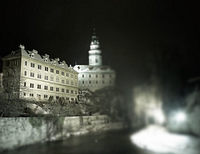
upcoming
exhibition
Sándor Csortos Szabó
Secret Gardens
Open to the public:
October 7 to November 13 2011
Every weekdays: 14.00 - 19.00
Weekend: 11.00 - 19.00
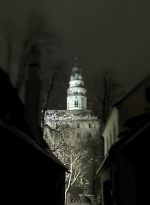
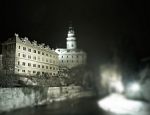
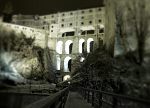
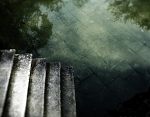

Sándor Csortos Szabó’s photos show various parts of the world. Those visiting his exhibition Secret Gardens can travel from the castle that once belonged to the late marquise of Bayreuth through a forgotten city of Cambodia.
Few are familiar with the castle in Bayreuth that stands at the edge of the city; tourists do not venture beyond the trinity of the homes of Wagner and Liszt, or the Wagner Opera House, although they should.
The Schwarzenberg Castle, known by many, is seen from a new perspective as well: the eerie castle of Český Krumlov is glows in nighttime splendor while white dashes of February snow shine through the photos.
In Portugal, travelers to Cabo de Roca often choose the shorter route instead of turning towards the mountains of Serra de Sintra to see the abandoned monastery of the Capuchin friars in the bosom of the forest. The black and white photos of the Convento dos Capuchos expose the monastery that has been defying nature for 350 years now.
In Cambodia, one has to travel further and further in order to admire the ruin temples of Angkor without being surrounded by the crowd of tourists. Csortos Szabó journeyed far to record the buildings built in the 10-12th centuries. The ruins now are overrun by the jungle and the vegetation re-conquers the once built-in area.
The exhibition Secret Gardens seems to be the photo collection of a travelling photographer that takes photos of less known monuments of four different coutries. The photos exhibited, however, are a lot more than that, claims Károly Kincses, the curator of the exhibition as follows:
What are secrects? So many men, so many secrets. What for some is
only a couple of stepts of some moss-grown stairs by the side of some
not-so-clean waters can be a section of Wagner’s garden in Bayreuth for others
who visited that on an excursion the year before last. For others, it can be the
photographic vision of transcendental existence. And they are, obviously, all
right. For those who see Csortos Szabó’s photos as stairs, castles, statues, and
such, let them do so. While those, too, feel free to enjoy the sense of eureka
for having been to the Schwarzenberg Castle in Český Krumlov. At the same time,
those who like to travel in their minds and souls aside from real travels, or
those who see Angkor not only as the stone-carved remains of an extinct culture
but also as one combatant scene where nature and human civilization clashed,
they should feel free. Everybody should look at these photos as they wish and
their opinions shall be respected as much as they respect the differing opinions
of the others. Mai Manó House has definitely organized Sándor Csortos Szabó’s
exhibition Secret Gardens for all three groups.
(Károly Kincses)
Born in 1962, Karcag, Hungary. 1980 - Graduated from the High-School of Applied Arts, Budapest. 1985 - Degree from the Interior Design Faculty of the University of Applied Arts, Budapest. 1986 - Became a Member of the National Association of Hungarian Artists. 1992 - Became a Member of the National Association of Hungarian Journalists.
He became acquainted with photography while at the High-School of Applied Arts. Although he originally studied at the Interior Design Faculty of the University of Applied Arts, the caprice of destiny took him repeatedly back to photography. His diploma work was to design the interior of the André Kertész Museum for Szigetbecse; while, in 1991, he designed the installation of the exhibition hall in the Museum of Hungarian Photography in Kecskemét.
A year later he already worked as a photographer for magazines ELITE and Hamu és Gyémánt (Ashes and Diamond). When ELITE Magazine was temporarily discontinued, he became unemployed and undertook jobs at advertising agencies. He worked as a copywriter, art director, and later on also as a creative director. He became acquainted with television productions as a producer of various programs; later, he also made portrait films and cultural programs for the Hungarian National Television.
In January 2000, he went to South-East Asia for an extended period of time. His first independent exhibition titled Angkor - Ruins in the Jungle was compiled from his photos taken there. The exhibition was visited by more than 12 000 people in three weeks, including His Excellency Árpád Göncz, former President of the Hungarian Republic, and His Holiness the 14th Dalai Lama. One year later, he was invited by the National Tourist Board of the Government of India to take photos of the Temples of Khajuraho. These photos illustrated the exhibition titled Khajuraho - Mysticism and Eroticism at the Museum of Applied Arts in Budapest.
His first book Fény, viszony (Light relations) was made together with Krisztina Tóth, a poet, and was published in 2004. This book, along with two other series of photos were awarded with the Honorable Mention at the International Photography Awards in Los Angeles. The book was selected for the collection of the British National Library (London).
From 2006 through 2011, several photos of Sándor Csortos Szabo were awarded Honorable Mention at the International Photography Awards and at the Px3 Prix de la Photographie Paris.
Csortos is currently working for the Hungarian branch of an international media agency (WPP/Group M), while continuing his creative activities and taking his own fine art photos.
|
Hungarian House of Photography in Mai Manó House
H-1065 Budapest-Terézváros, Nagymezõ utca 20.
Telephone: 473-2666
Fax: 473-2662
E-mail: maimano@maimano.hu
|
|
|


